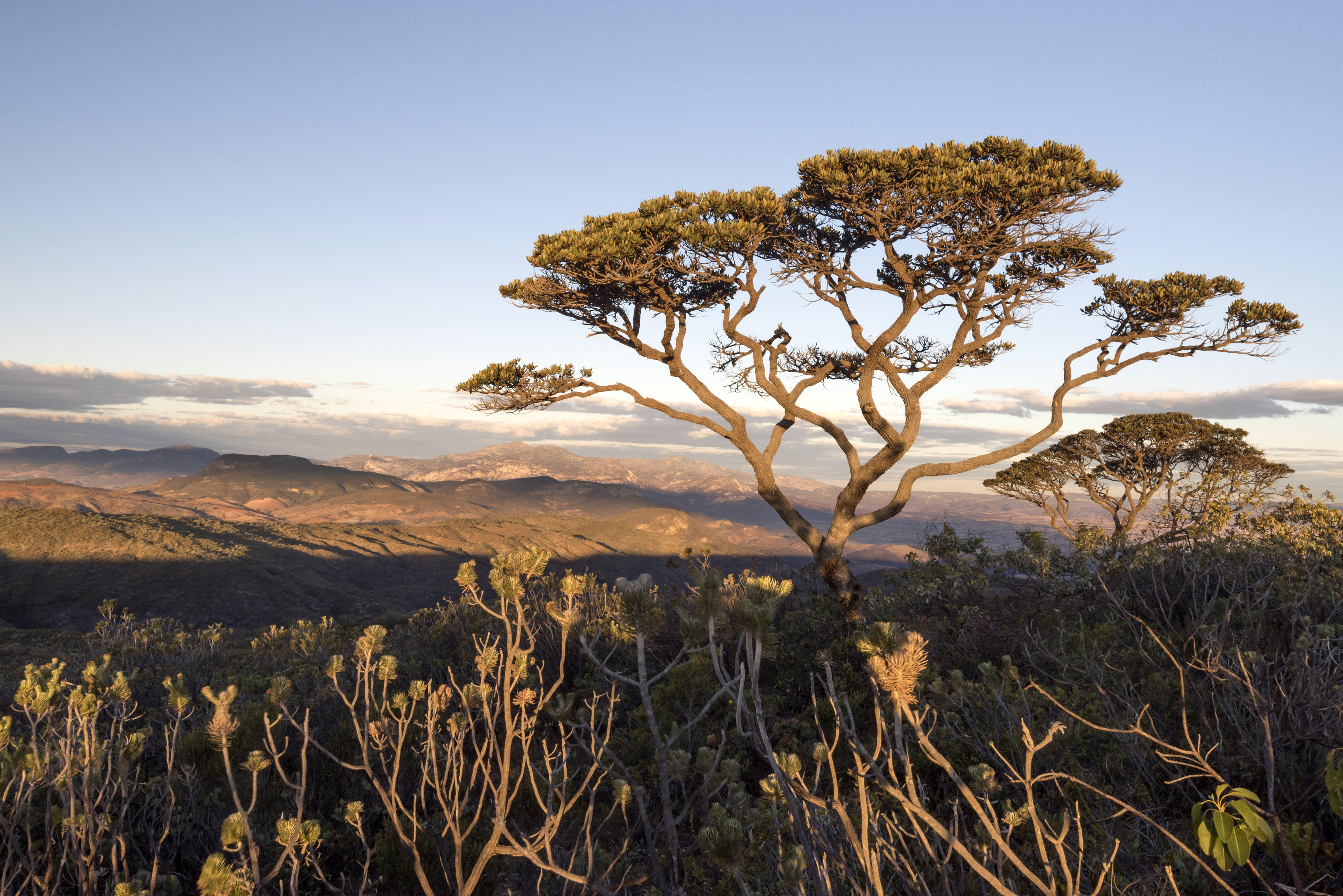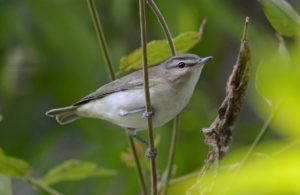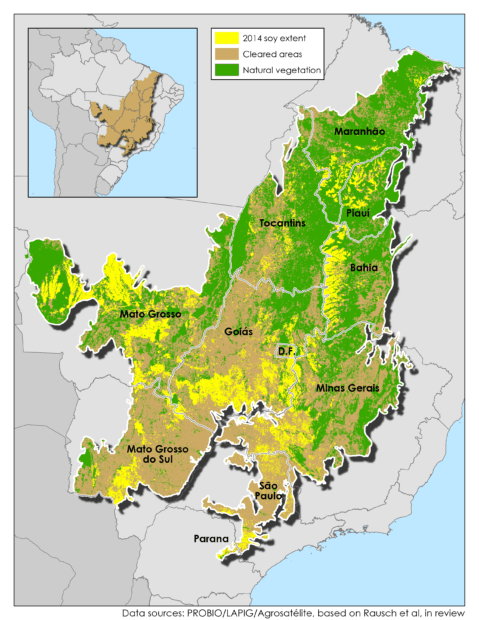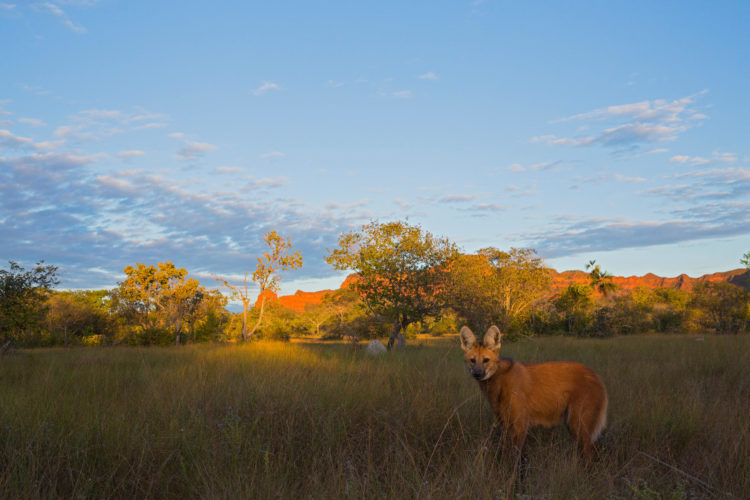We have much more to do and your continued support is needed now more than ever.
Twenty-three leading companies support protecting habitat in Brazil
In a decisive move, twenty-three of the world’s leading food companies step up to publicly commit to protect one of the most threatened habitats on the planet – the Brazilian Cerrado.

Update: On January 25, 2018, the Tropical Forest Alliance 2020 announced the number of companies supporting protection of the Brazilian Cerrado had nearly tripled, to a total of 61 signatories.
The Cerrado is one of the most amazing biomes on the planet. However, most people have never heard of it before because it’s impressive neighbor – the Amazon – typically gets all the attention. But with this recent announcement, the Cerrado takes center stage.
This monumental move by the private sector sends a strong message – loud and clear – that industry is ready to take action to help stop the destructive expansion of unsustainable agricultural production across this region.
“The Cerrado, one of the world’s most biodiverse and ecologically important ecosystems on the planet has gained a powerful ally today,” remarked Collin O’Mara, President and CEO of the National Wildlife Federation. “The demonstrated support from these companies brings us closer to cost-effective and efficient ways to meet expected demand for agricultural products without threatening vital, biodiverse regions like the Cerrado.”
This is a huge step forward and will help ensure that the growth and development of agriculture in this region does not jeopardize wildlife or the social, economic, and environmental backbone of the Cerrado.
A critical region for wildlife, biodiversity, and climate
The Cerrado is one of the largest and most biodiverse wooded savannas on the planet. It is also among the most threatened. Nearly three times the size of Texas, the Cerrado is home to over 12,000 native plant species[1], 800 species of birds[2], 200 species of mammals and hundreds of fish, reptiles, and amphibians[3].

The Cerrado also serves as a refuge for many migratory birds, like the Red-Eyed Vireo and Purple Martin that make the arduous journey thousands of miles to escape the harsh U.S. winter[4]. Our feathered friends that head south for the winter depend on healthy, intact habitats for food and shelter before making the long trip back home in the springtime.
One of the Cerrado’s biggest virtues is also its most hidden. The plant species in the Cerrado have specially evolved root systems extending deep below the surface. Aptly referred to as “upside down forests” – these dense root systems help retain moisture and house massive amounts of carbon. If current trends in the Cerrado continue, researchers estimate that up to 8.5 billion tonnes of carbon pollution could be released into the atmosphere by 2050. [5] This would have devastating impacts on global climate.
The role of agriculture production
In addition to being a haven for wildlife, the Cerrado supports local communities and regional economies. The Cerrado is one of the agricultural powerhouse regions of Brazil, and is often referred to as the breadbasket of Latin America. The food produced in the Cerrado is exported across the planet and the rivers and lakes throughout this region supply fresh water and energy to millions of people in Brazil.
Despite its rugged appearance, the Cerrado is quite fragile and sensitive. It is a drought-prone region that is vulnerable to changes in temperature and rainfall. There is strong scientific evidence linking increased destruction of natural habitats (e.g. cutting and burning forests and grasslands) with hotter temperatures, reduced rainfall, more intense fires and more severe droughts – all of which will likely have a negative impact on agriculture production and local communities.
In fact, a major drought in 2016, in the northern region of the Cerrado, caused up to 50% losses in soy production, dealing a devastating blow to the region[6].
Not only is protecting habitat in the Cerrado good for wildlife and the climate, it can also help protect the long-term viability of agriculture in this region as well – a true win-win for business and the environment!
What’s driving the destruction of the Cerrado?
To date, almost 45% of the Cerrado’s native vegetation has already been cleared[7]. This adds up to over 220 million acres, which is equivalent to losing an area larger than the size of California – twice!

Among the many factors that contribute to the destruction of the Cerrado (including infrastructure projects, urban development and mining), the single largest factor is the expansion of agricultural production for cattle and soy.
In fact, about 90% of deforestation and conversion of native habitat in Brazil is attributed to the expansion of pasture and commercial crops.[8]
What’s the solution?
Fortunately, there is a clear pathway for agriculture to expand without jeopardizing important habitat.
There is more than enough land – that has already been cleared – to meet expected demand for agricultural products, both within Brazil and internationally. There is absolutely no need for agriculture to continue to expand into native habitat.[9]
“There are over 38 million hectares of land that has already been cleared and could be used for new soy expansion,” explains Lisa Rausch, Researcher at the University of Wisconsin – Madison. “Much of this area is currently used as pasture, but it is also in very close proximity to existing soy silos. By focusing expansion on these areas, soy area could potentially triple in the Cerrado without needing to destroy more habitat. Given this and given current yield levels, there are tremendous opportunities to increase agricultural productivity and more strategically utilize the land that has already been opened up for production.”
Therefore, protecting habitat in the Cerrado is not only compatible with economic growth and development strategies for Brazil, but will also help ensure the long-term viability of agriculture in this region.
How can companies be part of the solution?
Brazil is one of the world’s leading producers and exporters of soy and cattle products. The private sector is on the front lines of the production, financing and sourcing of these products. Therefore, the private sector has an important role to play in helping shape the way these agricultural systems are developed and how they operate.
Leading companies have the ability, through their procurement policies and sourcing practices, to change the course of agricultural production in the Cerrado towards a more sustainable path – one that protects habitat and the long-term viability of agriculture in this region.

Coordinated support from leading companies for the adoption and implementation of commitments that end habitat loss, and to complement existing regulatory frameworks, can help achieve win-win outcomes in the Cerrado.
What’s the significance of this announcement?
This recent announcement represents a major step forward by the private sector, clearly outlining an explicit goal for protecting habitat in the Cerrado. The National Wildlife Federation has been working closely with World Wildlife Fund (WWF), The Nature Conservancy (TNC), and many groups in Brazil to support their efforts.
Last month, some of the largest and most influential conservation groups and research institutions, including the National Wildlife Federation, came together to sign the Cerrado Manifesto, a call to action, drawing attention to the challenges and opportunities to protect the Cerrado. Over the past several weeks, the National Wildlife Federation and our partners hosted a series of key meetings with leading food companies in the U.S., Europe, and Brazil to align support for the actions needed.
Celebrating commitments today. Focusing on implementation tomorrow.
This monumental announcement absolutely calls for celebration, but once the champagne is gone and the confetti has been swept up, how do we move from a commitment on paper to effective implementation on the ground? This is the critical question that many companies will be grappling with in the coming months.
The National Wildlife Federation and many partners are providing a suite of tools and resources for companies to help increase efficiency and reduce the costs of implementation. These will help enable companies to continue to source agricultural products from Brazil with confidence.






















